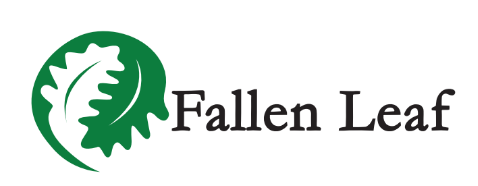
This apple tree branch is displaying a major fire blight infection. A significant portion of the branch needs to be pruned.
When we think of disease-stricken trees, the average person doesn’t usually think of them looking like survivors of a recent fire. But that is what gives fire blight the name: Affected trees in bloom display leaves that look shriveled and burnt. And while major apple and pear farms have much to fear from a fire blight infection, the disease can strike trees even in suburban environments.
Fire blight is highly infectious and destructive under the right conditions. Apple orchards can be wiped out in a single season if the grower fails to identify infected trees. Worse still, there is no known cure for trees afflicted by fire blight. Prevention and control are the best and only medicine.
The disease is caused by the Erwinia amylovora bacterium. It can be found throughout the United States, but has spread throughout the world.
Fire blight symptoms to look out for
Fire blight affects apple (Pomoideae) trees, pear trees, and a range of rosaceous plants. Fortunately, all recognizable symptoms are above ground, so you can easily identify affected trees that require action.

Note the difference between the two apples. While the one on the left looks significantly healthier, it is at risk of ending up similar to its fire blight afflicted neighbor.
The most obvious symptom is the appearance of the tree’s leaves during bloom. Affected leaves will appear gray-green within a couple weeks of petal fall. These leaves will eventually blacken and shrivel, giving the distinct appearance that earns the disease its name. Branches of infected trees can die, but still harbor the disease, making the swift removal of these branches critical to protect other trees on your property.
A subtler indicator is the bacterial fluid that appears on affected twigs, branches, and tree trunks, seeping from cankers on the tree. These cankers will start to appear as a tree comes out of its dormant months. The ooze is initially watery and light tan, but darkens with exposure to air.
Prevention is inconsistent, but still the best defense
If you know that apple or pear trees in your area are afflicted with fire blight, prevention is the first line of defense. If the affected tree belongs to someone else, and they are not taking care of it, your own trees are at risk. Pests and bees can easily spread the bacteria, especially during flower bloom.
A weak Bordeaux spray can be applied even before infection sets in. This is not without some side effects, and it doesn’t guarantee complete protection. This copper product must be applied as the tree flowers. This can cause scarring to any fruit growing on your tree. Copper products are the only control methods available to homeowners, but orchards use an antibiotic spray in combination with Bordeaux sprays. However, as with other forms of bacteria, Erwinia amylovora has developed resistance to the commonly used antibiotic.
Control is vital in stopping the spread of fire blight
The unfortunate reality of fire blight is that once it has taken hold within a tree, there is currently no cure. The pathogen can remain with a tree indefinitely, surviving harsh winters and summers alike. Spring time can herald a rise in the number of affected trees, particularly at orchards where bees and other insects can become efficient vectors.
Temperatures dictate the spread of the pathogen, making the spring and fall months a time where the disease is most difficult to control. You can remove blighted branches and leaves, which can not only limit the spread of infection on a given tree, it can protect other trees on your property.
The winter and summer months, when the bacteria has been halted due to the temperatures, are the best times to remove infected branches and wood. The cankers caused by Erwinia amylovora are easier to spot. Appropriate pruning of a branch can then halt the spread of the infection. It is important to prune effectively, otherwise you may not be removing all the infected wood.
If the infection reaches the tree trunk, you can still save the tree, but it will require regular maintenance.
When to call in the professionals
Depending on the tree, it may be worth your while to hire an tree service company. They’re able to safely get the work done for taller trees. With serious infections, it can be a challenge for an untrained homeowner to remove all the infected parts of the tree. It can also be easy to overdo spray chemical treatments for amateur arborist homeowners.
Calling a professional tree service company improves chances at dealing with all the infections of a tree. It also is the best way to ensure the pruned branches and scraped wood are properly disposed of. A pile of branches with fire blight can still lead to additional infections.
If the infection is particularly wide-spread throughout the tree, it’s best to call an arborist to get a proper assessment. The tree may be too far gone to save, which may necessitate a removal. Trees that have experienced multiple fire blight infections can be a threat to other trees. Pests and pollenators can spread the bacteria. Harsh weather and high winds spread infected tree material. Removal is the one way to absolutely guarantee the tree cannot threaten others with fire blight.
A fire blight infection can feel like your trees are under a death sentence. But as long as you’re paying attention to the tree, performing the regular care it needs, or hiring the pros to handle what you can’t, there is hope. The disease can be controlled, and your tree can remain on the property for many years to come.
